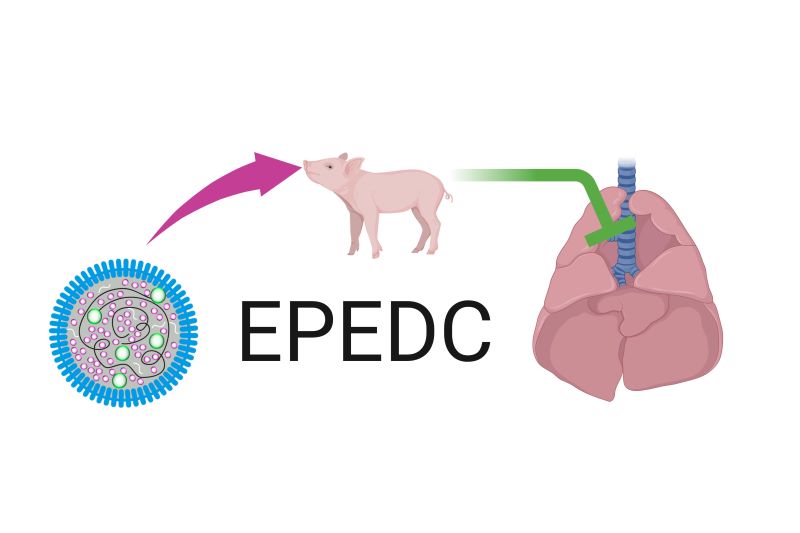
Protecting Pigs From Enzootic Pneumonia: Rational Design Of Safe Attenuated Vaccines (EPEDC)
Mycoplasma Hyopneumoniae (M.hyop) is a major worldwide pathogen in the pig industry that is the cause of enzootic pneumonia. Current vaccines are all based on inactivated or subunit approaches but fail to prevent circulation of the pathogen. Evidence from vaccines to other Mycoplasma species, e.g. M.gallisepticum vaccines in chickens suggests that live vaccines can be extremely effective at preventing disease spread. Barriers towards implementation of this type of vaccine for M.hyop include the lack of suitable strains that are sufficiently immunogenic without causing disease. One solution to this problem would be identification genes which contribute towards the pathogenesis of the bacteria as a basis to identify strains suitable to form the basis for new vaccines.

Challenge
Mycoplasma hyopneumonia (M.hyop) is the primary pathogen of enzootic pneumonia (EP), a chronic respiratory disease in pigs. Infections occur worldwide and cause major economic losses to the pig industry, thus having a significant socio-economic impact on pig farmers. Close contact between infected and susceptible pigs is the main route of M.hyop transmission. Piglets are considered free from M.hyop at birth, as in utero transmission has not been documented, and first exposure events occur during the lactation period, when piglets are in contact with dams shedding the microorganism. In fact, the length of the lactation period has been suggested as one risk factor for piglet colonization with M.hyop prior to weaning, and given that the prevalence of M.hyop is around 30%, this places piglets under an enormous risk to be infected. Unfortunately, there are currently no commercial vaccines available that would prevent this initial infection. Indeed, piglet colonization with M.hyop at weaning age is of special importance in segregated production systems, where pigs are transferred to clean facilities for the growing and finishing phases. It has been proposed that the initial group colonisation with M.Hyop determines downstream clinical presentation and disease severity, which is further impacted by the long duration of M.hyop infection that can reach up to 240 days as well as the ability to be infective even after wind dispersal (as far as 9.2km from an infected farm). Thus, an interruption of the colonisation cycle through effective vaccines will benefit the whole porcine production system. M.hyop is primarily found on the mucosal surface of the trachea, bronchi and bronchioles, with different adhesins and lipoproteins being involved in the adherence process, thus rendering infected animals more susceptible to secondary infections. Specifically, the destruction of the mucociliary apparatus, together with the ability of M.hyop to module the immune response, enhances the susceptibility of infected pigs to secondary pathogens. Whereas M.hyop is still susceptible to a variety of antibiotics, their use needs to be reduced to avoid occurrence of multi-drug resistant strains as well as the general drive to reduce antimicrobial usage. Current available vaccines are often cost-efficient but mainly consist of inactivated vaccines which improve production parameters but do not prevent infection or spread of the pathogen, and their use is often limited to one age group, i.e. sows or piglets after 3 weeks of age. Thus, research on developing new vaccines that confer protective immunity and reduce transmission is a priority, as well as optimization of protocols to eliminate M.hyop from pig herds.
Solution
Here, we are aiming to produce strains of bacteria which are unable to cause disease in pigs but still stimulate a protective immune response. This work builds on previous BBSRC-funded work identifying genes which are essential for survival of the pathogen in pigs and AHDB funded work to isolate strains of bacteria from UK pigs. Once complete, the project will have discovered bacterial genes that are necessary for disease as a basis for the development of better vaccines to prevent, and prevent the circulation of, enzootic pneumonia.
People
Dr Sonja Jaeckel
Dr Angela Holder
Partners
- BBSRC Endemic Livestock Diseases Initiative
- Zoetis Animal Health
